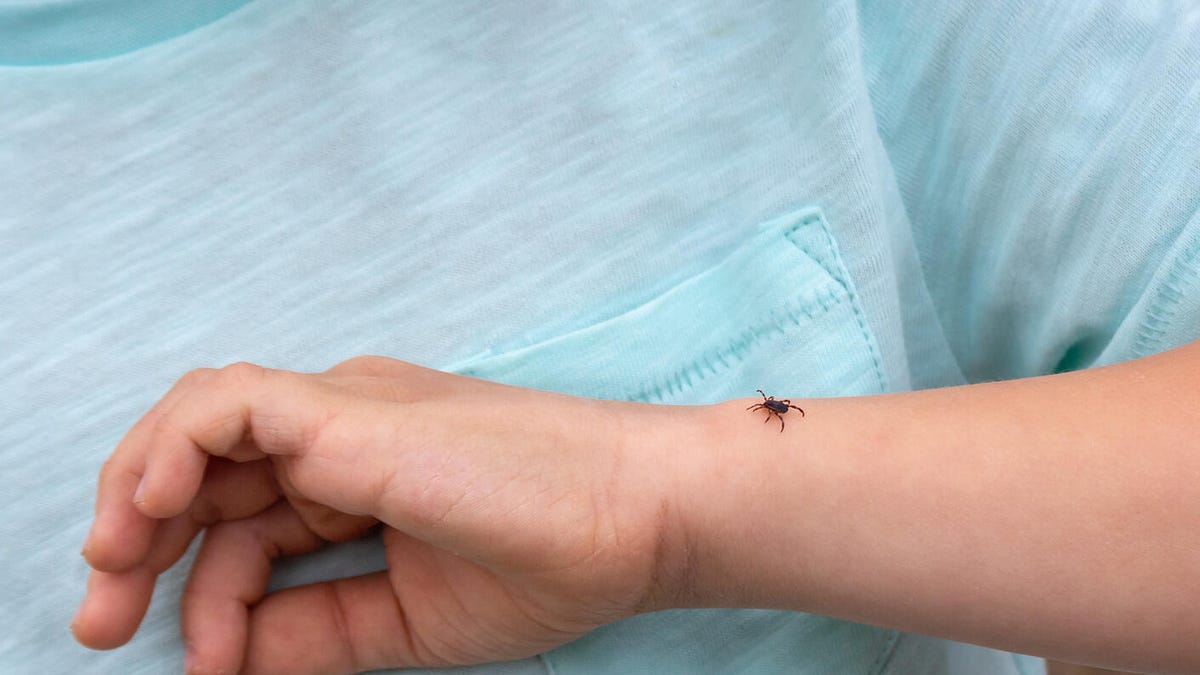A Lyme Disease Vaccine Is Finally in the Works. Here's What We Know About It

A drug currently in final clinical trials could be the first Lyme disease vaccine for humans in 20 years.
What's happening
VLA15, the first Lyme disease vaccine candidate in 20 years, is beginning its final clinical trial.
Why it matters
Some 476,000 Americans contract Lyme disease each year. If left untreated, it can lead to serious neurological issues like facial palsy and brain fog.
As many as 476,000 Americans are infected with Lyme disease annually, according to the Centers for Disease Control and Prevention, resulting in a telltale rash and flu-like symptoms, including fever, headache, muscle aches, fatigue and swollen lymph nodes.
If left untreated, Lyme disease can lead to more serious consequences -- including arthritis, facial palsy, brain fog and nerve pain.
Patients are typically treated with antibiotics like doxycycline. But a new drug from Pfizer and French pharmaceutical company Valneva could become the next -- and only -- Lyme disease vaccine available in the US. The drugmakers have launched a final human clinical trial for their vaccine candidate, VLA15. If the Phase 3 study is successful, the companies are looking at applying for approval from the US Food and Drug Administration.
"With increasing global rates of Lyme disease, providing a new option for people to help protect themselves from the disease is more important than ever," Annaliesa Anderson, Pfizer's head of vaccine research and development, said in a statement.
Here's what you need to know about VLA15 and Lyme disease, including how it works, how it will be tested and when it could receive approval.
For more on vaccines, here's what to know about this fall's COVID-19 vaccine booster and where you can get a COVID shot for your children.
What is Lyme disease?
A traditional "bull's eye" rash caused by Lyme disease.
Lyme disease, or Borreliosis, is a bacterial infection transmitted to humans via the bite of a tick carrying the bacterium Borrelia burgdorferi. In the US, the most common carriers are black-legged or deer ticks.
Notable for its telltale "bullseye" rash, Lyme disease is considered the most common insect-transmitted illness in the Northern Hemisphere. Human expansion into wooded environments is contributing to an increase in Lyme disease, as is climate change, "especially in the context of global warming," Dr. James Marvel, a wilderness medicine expert at Stanford Health Care, told CNET, because it's creating an environment more favorable to the ticks.
Early symptoms of Lyme disease are often ignored or misinterpreted, leaving time for more serious complications to set in.
"The medical need for vaccination against Lyme disease is steadily increasing as the geographic footprint of the disease widens," Pfizer said in a statement.
Read more: How to Avoid Ticks and Prevent Lyme Disease
Is there already a Lyme disease vaccine?
The FDA previously approved a Lyme disease vaccine called Lymerix in 1998. Manufactured by SmithKline Beecham (now GlaxoSmithKline), Lymerix reduced new infections in adults by nearly 80%, according to the journal Epidemiology and Infection.
But some patients testified that they later developed arthritis. Even though an FDA investigation failed to show a link, media reports about the claims led to declining use and dwindling sales at the time.
Lymerix was pulled from the market in 2002, after just three years.
There hasn't been a Lyme disease vaccine since 2002, when Lymerix was taken off the market.
When could the new Lyme disease vaccine be on the market?
Research into VLA15 was granted "fast track" status by the FDA in July 2017.
If the latest human trials are successful, Pfizer and Valneva said they will apply for approval from the FDA and the European Medicines Agency in 2025.
How does the vaccine work?
VLA15 targets the outer surface protein (OspA) of Borrelia burgdorferi, the bacteria that cause Lyme disease.
"Blocking OspA inhibits the bacterium's ability to leave the tick and infect humans," according to the news release.
Pfizer -- which codeveloped a COVID-19 vaccine with BioNTech -- reports VLA15 has so far demonstrated "a strong immune response and satisfactory safety profile" in pre-clinical and clinical trials.
While VLA15 works similarly to Lymerix, it omits a protein region "that some had attributed to adverse events," according to the National Institute of Allergy and Infectious Diseases, NPR reported.
How will the VLA15 study be conducted?
Approximately 6,000 participants ages 5 and older will be enrolled at up to 50 sites in countries where Lyme disease is endemic, including the US, Finland, Germany, the Netherlands, Poland and Sweden.
Research subjects will receive three doses of 180 micrograms of VLA15 or a placebo, followed by a booster dose.

